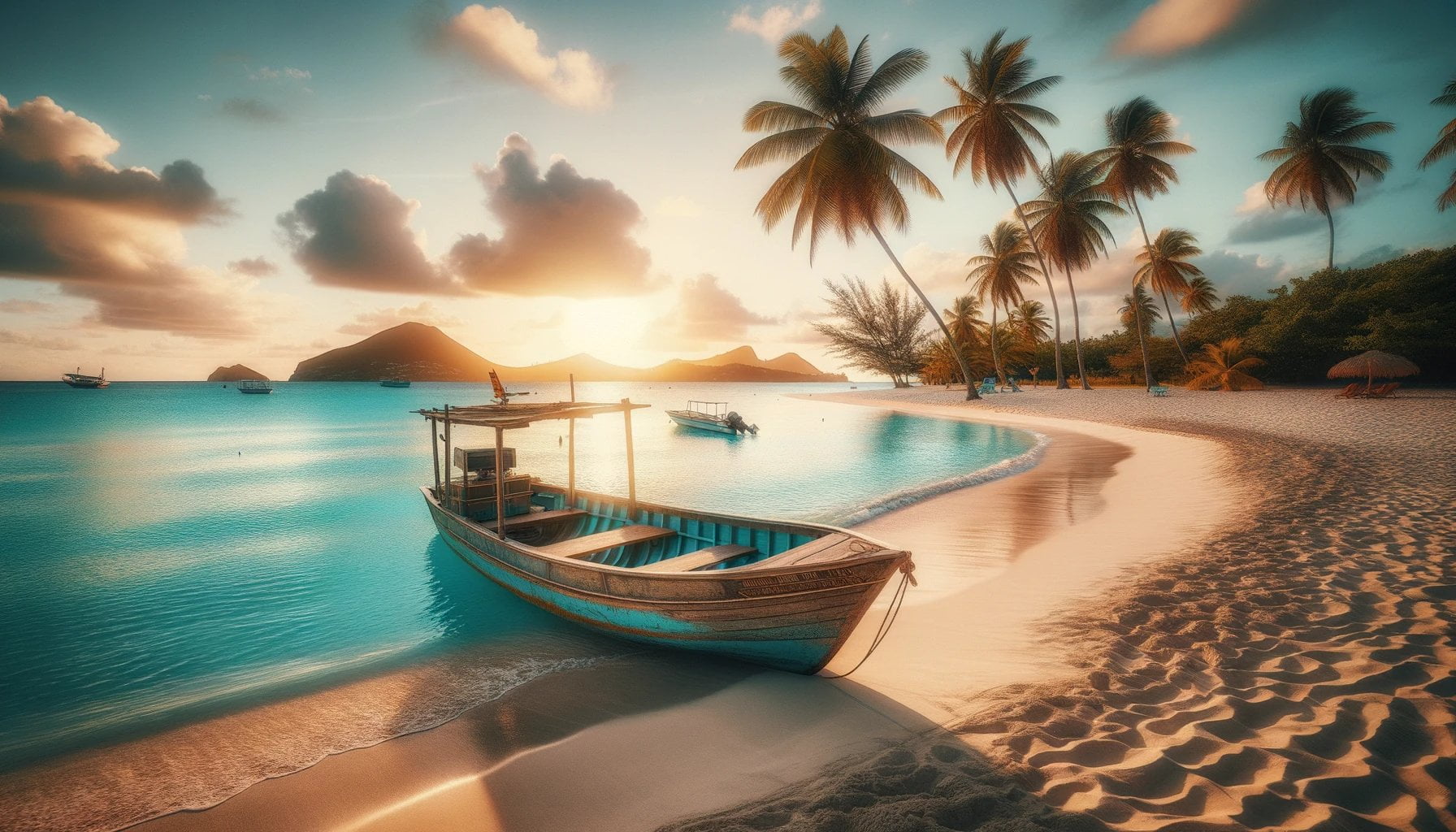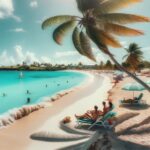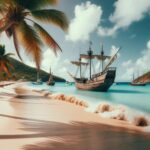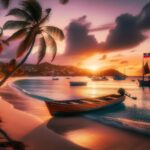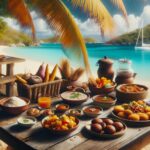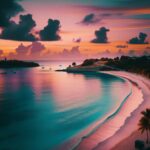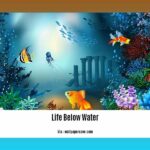Discover the allure of Antigua and Barbuda as we delve into the Conch Environment, Government, and Historical facts that make these Caribbean islands truly unique. From pristine beaches to vibrant coral reefs, the arresting beauty of this hidden gem is matched only by its rich cultural heritage. Join us on a journey that will unravel captivating insights and delve into the lesser-known aspects of Antigua and Barbuda’s captivating charm.
Key Takeaways:
- Antigua and Barbuda is one of the smallest countries in the world, ranking 182nd by area.
- It consists of three islands: Antigua, Barbuda, and Redonda.
- Antigua is known as the “land of 365 beaches” and has a rich cultural heritage influenced by British and African traditions.
- Barbuda is a flat and well-wooded coral island with no streams or lakes and receives less rainfall than Antigua.
- The current population of Antigua and Barbuda combined is 99,539.
- Mount Obama, located on Antigua, is the highest point of the nation.
- Antigua and Barbuda is made up of 46 islands and islets.
- Redonda, one of the islands, was once a kingdom and an important exporter of guano.
- Barbuda was formerly known as Dulcina and is 62 square miles in area.
- The Caribbean Warehouse and Facts About Anything provide additional information about Antigua and Barbuda, such as its beaches and cultural heritage.
Facts About Antigua and Barbuda
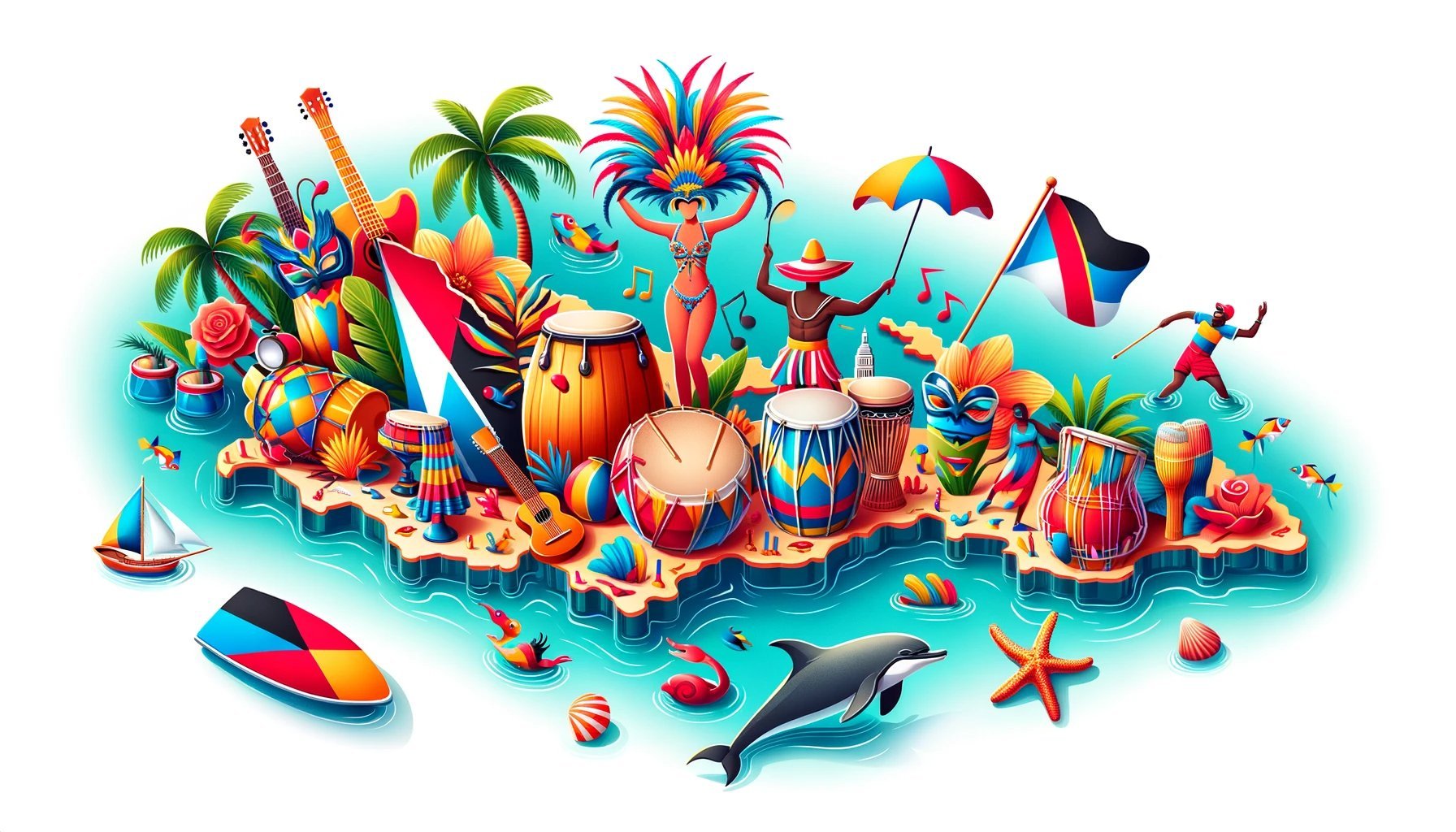
Antigua and Barbuda, a captivating island nation in the Caribbean, is a hidden gem waiting to be explored. With its stunning beaches, rich cultural heritage, and vibrant traditions, this destination offers a unique experience for travelers seeking something off the beaten path. Let’s dive into some fascinating facts about Antigua and Barbuda that will make you fall in love with this Caribbean paradise.
1. The Land of 365 Beaches
Antigua, one of the main islands of Antigua and Barbuda, boasts an astonishing 365 beaches. Yes, you read that right! With a different beach for every day of the year, you’ll never run out of sandy shores to explore. Each beach has its own charm, whether it’s the lively atmosphere of Dickenson Bay or the secluded tranquility of Half Moon Bay. Whether you’re a sunbather, water sports enthusiast, or nature lover, Antigua’s diverse beaches cater to every type of traveler.
2. A Tapestry of Cultural Influences
Antigua and Barbuda’s cultural heritage is a vibrant tapestry woven from various influences. Once a British colony, the remnants of British colonial rule can still be seen in the island’s architecture and traditions. However, African cultural influences are also prominent, especially in the music, dance, and culinary traditions of the locals. The fusion of these two cultures creates a unique and flavorful experience for visitors, offering a glimpse into the island’s captivating history.
3. Three Islands, One Nation
Antigua and Barbuda consists of three main islands: Antigua, Barbuda, and Redonda. Antigua is the largest of the three, known for its breathtaking landscapes and historical sites. Barbuda, located north of Antigua, is a flat coral island known for its pristine pink sand beaches and diverse wildlife. Redonda, although uninhabited, boasts stunning cliffs and is a haven for birdwatching enthusiasts. Each island has its own distinct character, contributing to the overall charm of the nation.
4. Mount Obama: A Majestic Peak
Mount Obama, named in honor of the former U.S. President Barack Obama, is the highest point in Antigua and Barbuda. Nestled on the island of Antigua, this majestic peak offers sweeping vistas of the surrounding landscape. Whether you’re an avid hiker or simply seeking breathtaking views, a visit to Mount Obama is a must for nature enthusiasts.
5. Islands Galore
Antigua and Barbuda may be a small nation, but it is home to an impressive 46 islands and islets. From the larger islands like Antigua and Barbuda themselves to the smaller, uninhabited islets, each offers its own unique beauty and allure. Imagine exploring these hidden gems, untouched by mass tourism, and discovering your own slice of paradise.
6. Barbuda: A Coral Wonder
Barbuda, also known as Dulcina, is a flat and well-wooded coral island that lies north of Antigua. With an area of 62 square miles, it may be smaller than its sister island, but it compensates with its captivating natural beauty. Barbuda is a haven for marine life and boasts pristine coral reefs, making it a paradise for snorkelers and divers. Explore the crystal-clear waters, witness the vibrant marine ecosystem, and create unforgettable memories in this breathtaking coral wonderland.
7. Redonda: From Kingdom to Nature Reserve
Redonda, the third island of Antigua and Barbuda, has a fascinating history. Once a kingdom and an important exporter of guano (bird droppings used as fertilizer), Redonda is now an uninhabited nature reserve. Its rugged cliffs and diverse bird species make it a sanctuary for wildlife, offering a unique opportunity to witness nature’s wonders up close.
Antigua and Barbuda may be small in size, but it is big on charm and adventure. From its diverse beaches to its rich cultural heritage, this Caribbean destination has something to offer every traveler. So why not embark on a journey to unravel the wonders of Antigua and Barbuda? Discover its hidden gems, immerse yourself in its unique traditions, and create memories that will last a lifetime.
Antigua and Barbuda have a rich and vibrant culture, with a myriad of traditions and customs waiting to be discovered. Explore the fascinating world of Antigua and Barbuda culture by clicking here to delve deeper into its captivating heritage.
Get ready to embark on an extraordinary journey through time by uncovering the intriguing history of Antigua and Barbuda. Click here to discover the fascinating stories and events that have shaped this beautiful Caribbean nation.
Antigua and Barbuda boast breathtakingly beautiful landscapes and iconic sights that should not be missed. Click here to explore the must-visit famous places in Antigua and Barbuda and experience the magic of this tropical paradise.
Prepare your taste buds for an exquisite culinary adventure in Antigua and Barbuda. Click here to tantalize your senses and discover the mouthwatering flavors of Antiguan and Barbudan cuisine.
Immerse yourself in the enchanting world of tourism in Antigua and Barbuda, where pristine beaches, lush rainforests, and vibrant culture await. Click here to explore the endless possibilities and plan your dream vacation in this Caribbean gem.
Government
Antigua and Barbuda, a hidden gem in the heart of the Caribbean, boasts not only breathtaking beaches and a rich cultural heritage but also a fascinating government system. Let’s dive into the captivating realm of governance that molds this unique destination.
A British-inspired Parliamentary System
Antigua and Barbuda functions as a constitutional monarchy with a British-style parliamentary system of government. This means that the reigning British monarch is represented by an appointed governor general, who serves as the head of state in Antigua. This system sets the foundation for the country’s political landscape.
Three Branches of Power
Similar to many democratic nations, Antigua and Barbuda’s government is divided into three branches: legislative, executive, and judicial. The legislative branch is responsible for enacting laws and consists of a Senate and a House of Representatives. Together, these chambers form a two-chambered legislature that ensures a balanced decision-making process.
The Prime Minister’s Role
At the helm of the executive branch is the prime minister, who holds the position of the head of government. This individual wields significant authority and is responsible for overseeing the day-to-day operations of the nation. Their leadership shapes the policies and directions that have a direct impact on the lives of Antiguans and Barbudans.
Political Parties and Elections
Antigua and Barbuda embraces the principles of multiparty parliamentary democracy. The country’s dominant political party is the Antigua and Barbuda Labour Party, which secured a majority of seats in the parliamentary elections of 2018. This democratic system allows for the peaceful transfer of power and ensures representation for diverse voices within the nation.
A Journey Towards Self-Governance
The path to autonomy began in 1967 when Antigua and Barbuda became a self-governing state within the British Commonwealth. This significant step paved the way for the development and growth of the nation, providing Antiguans and Barbudans the opportunity to shape their own destiny.
These intriguing aspects of Antigua and Barbuda’s government shed light on the country’s political landscape and help us understand the democratic systems that play a vital role in the nation’s development.
Key Takeaways:
- Antigua and Barbuda operates under a constitutional monarchy with a British-style parliamentary system.
- The governor general represents the British monarch as the head of state.
- The government comprises three branches: legislative, executive, and judicial.
- The prime minister serves as the head of government and holds significant authority.
- The Antigua and Barbuda Labour Party is the ruling political party in the country.
- Antigua and Barbuda achieved self-governance within the British Commonwealth in 1967.
Sources:
– Antigua and Barbuda – Government and Politics. Retrieved from countrystudies.us
– Antigua and Barbuda | History, Geography, & Facts. Retrieved from britannica.com
Historical Facts About Antigua and Barbuda
Discovery by Christopher Columbus
- Christopher Columbus discovered Antigua and Barbuda in 1493, marking the islands’ connection with the European world. This discovery played a significant role in shaping their future.
Naming by the Spaniards
- After the islands were discovered, the Spaniards named them. “Antigua” was derived from the Spanish word for “ancient,” due to the presence of ancient Amerindian settlements. “Barbuda” is believed to have been named after the Spanish term for “bearded,” referring to the fig trees that resembled beards.
Hotbed for Slavery
- Antigua and Barbuda became a significant hub for the transatlantic slave trade during the colonial period. British plantations, primarily cultivating sugar cane, were established, and thousands of enslaved Africans were brought to the islands. This contributed to the islands’ economy but caused great suffering.
Commemoration through the Antigua Carnival
- The citizens of Antigua and Barbuda commemorate their emancipation from slavery through the Antigua Carnival. This vibrant celebration showcases the country’s rich cultural heritage through music, dance, costumes, and food. It serves as a reminder of the resilience and triumph of the people over the dark chapter of slavery.
English as the Official Language
- English is the official language of Antigua and Barbuda. This is a remnant of the islands’ colonial history, as both the British and the Spanish had a significant influence. The use of English facilitates communication within the country and with the rest of the English-speaking world.
Capital City: St. John’s, Antigua
- St. John’s, located on the island of Antigua, is the capital city of Antigua and Barbuda. As the largest city in the country, St. John’s serves as the economic, cultural, and administrative center. It is home to various historical landmarks, government buildings, churches, and museums.
Key Takeaways:
– Antigua and Barbuda was discovered by Christopher Columbus in 1493, leading to their connection with the European world.
– The islands were named by the Spaniards, with “Antigua” representing the presence of ancient Amerindian settlements and “Barbuda” referring to the bearded fig trees.
– Antigua and Barbuda played a significant role in the transatlantic slave trade, with British plantations and thousands of enslaved Africans.
– The Antigua Carnival commemorates the emancipation from slavery and showcases the country’s cultural heritage.
– English is the official language, reflecting the islands’ colonial history and facilitating communication.
– St. John’s is the capital city and serves as the economic, cultural, and administrative center, with various historical landmarks.
Sources:
– Britannica – Antigua and Barbuda
– Facts Institute – 25 Interesting Facts about Antigua and Barbuda
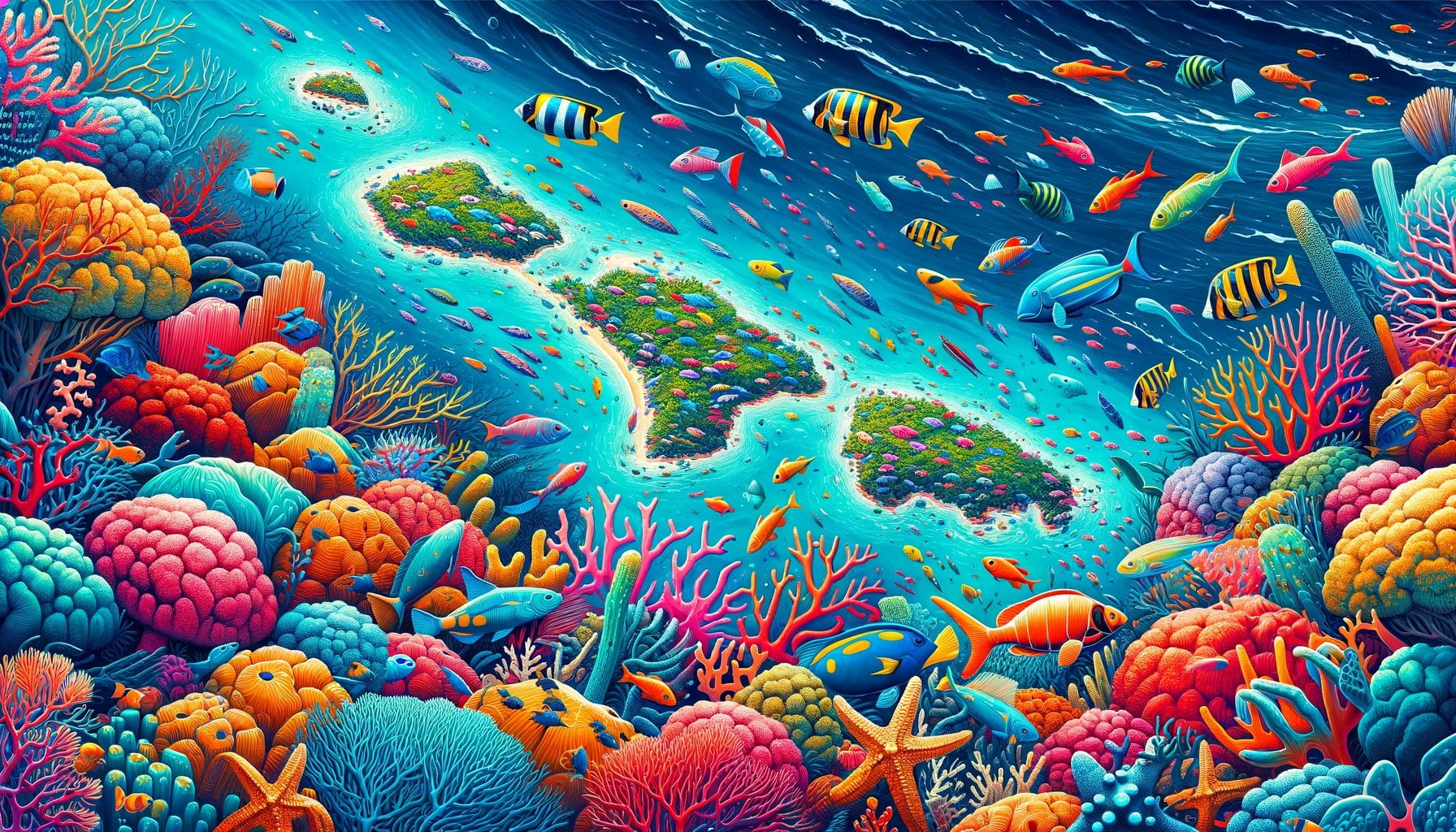
FAQ
Q1: What is the environmental condition of Antigua and Barbuda?
A1: Antigua and Barbuda boast a diverse and rich environment, with beautiful beaches, coral reefs, and lush vegetation. The islands are home to various species of plants and animals, including the critically endangered hawksbill turtle. Efforts are being made to protect and preserve the natural habitats and ecosystems of Antigua and Barbuda.
Q2: What is the government system of Antigua and Barbuda?
A2: Antigua and Barbuda is a constitutional monarchy with a British-style parliamentary system of government. The reigning British monarch is represented in Antigua by an appointed governor general as the head of state. The government of Antigua and Barbuda has three branches: legislative, executive, and judicial. The prime minister is the head of government, and the ruling party is the Antigua and Barbuda Labour Party.
Q3: What are some historical facts about Antigua and Barbuda?
A3: Antigua and Barbuda have a rich history. It was discovered by Christopher Columbus in 1493, and the islands were named by the Spaniards. Antigua became a hotbed for the transatlantic slave trade during the colonial period, with large-scale sugar plantations established by the British. The Antigua Carnival commemorates the emancipation from slavery. English is the official language due to the islands’ colonial history. The capital city of Antigua and Barbuda is St. John’s.
Q4: What are some interesting facts about Antigua and Barbuda’s government and politics?
A4: Antigua and Barbuda became a self-governing state within the British Commonwealth in 1967. The country has a two-chamber legislature consisting of a Senate and a House of Representatives. The ruling party, the Antigua and Barbuda Labour Party, won a majority of seats in the 2018 parliamentary elections. It is a multiparty parliamentary democracy with the prime minister as the head of government.
Q5: How many islands are there in Antigua and Barbuda?
A5: Antigua and Barbuda consist of 46 islands and islets. The main islands are Antigua, Barbuda, and Redonda. Antigua is known as the “land of 365 beaches” and has a rich cultural heritage. Barbuda is a flat and well-wooded coral island, while Redonda was once a kingdom and an important exporter of guano.
- SYBAU See You Baby Meaning: Gen Z Slang Evolves - July 1, 2025
- Unlock Your Inner Youth: Lifestyle Secrets for a Vibrant Life - July 1, 2025
- Decode SYBAU Meaning: Gen Z Slang Explained - July 1, 2025
